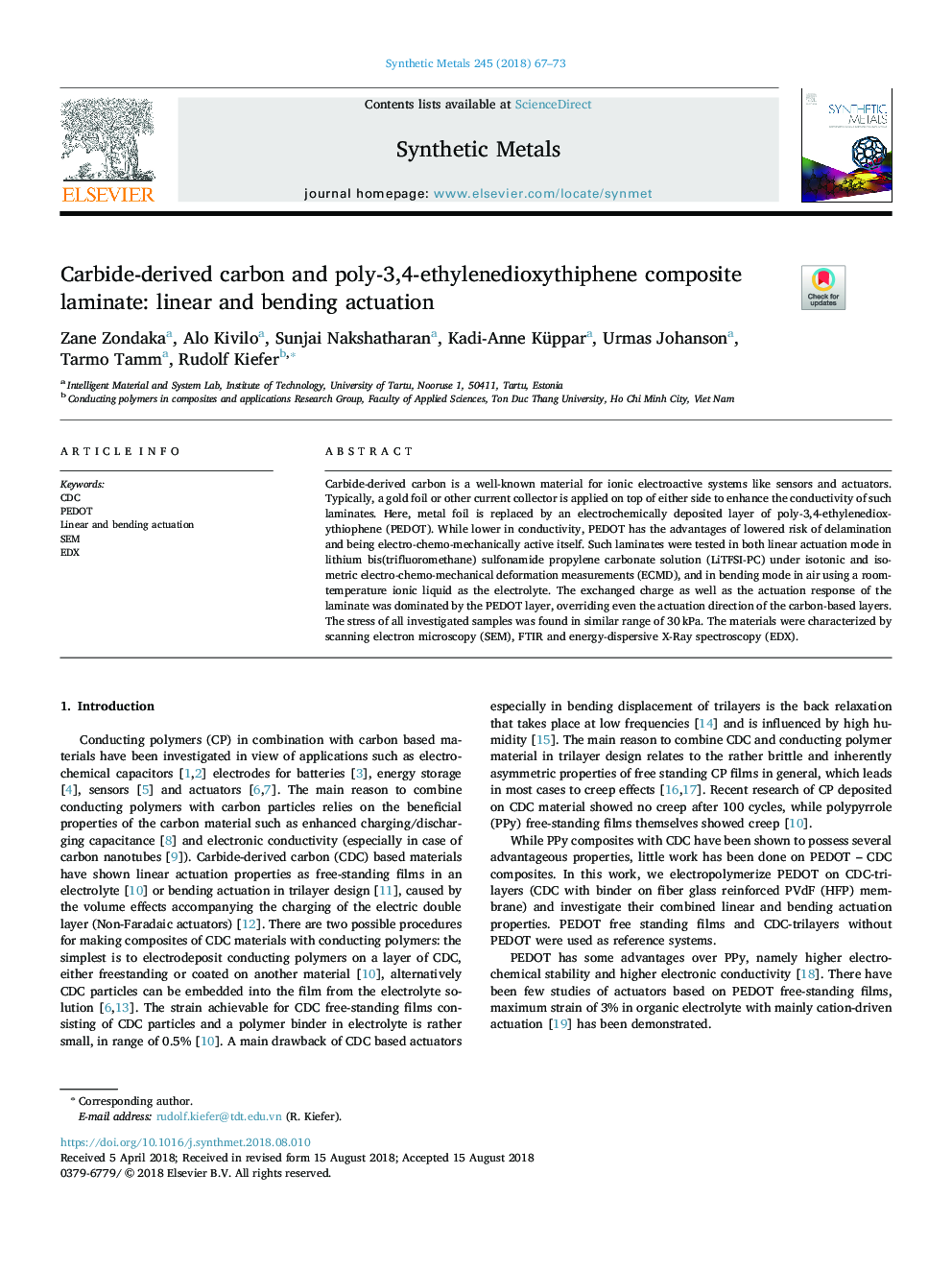| Article ID | Journal | Published Year | Pages | File Type |
|---|---|---|---|---|
| 9953490 | Synthetic Metals | 2018 | 7 Pages |
Abstract
Carbide-derived carbon is a well-known material for ionic electroactive systems like sensors and actuators. Typically, a gold foil or other current collector is applied on top of either side to enhance the conductivity of such laminates. Here, metal foil is replaced by an electrochemically deposited layer of poly-3,4-ethylenedioxythiophene (PEDOT). While lower in conductivity, PEDOT has the advantages of lowered risk of delamination and being electro-chemo-mechanically active itself. Such laminates were tested in both linear actuation mode in lithium bis(trifluoromethane) sulfonamide propylene carbonate solution (LiTFSI-PC) under isotonic and isometric electro-chemo-mechanical deformation measurements (ECMD), and in bending mode in air using a room-temperature ionic liquid as the electrolyte. The exchanged charge as well as the actuation response of the laminate was dominated by the PEDOT layer, overriding even the actuation direction of the carbon-based layers. The stress of all investigated samples was found in similar range of 30âkPa. The materials were characterized by scanning electron microscopy (SEM), FTIR and energy-dispersive X-Ray spectroscopy (EDX).
Related Topics
Physical Sciences and Engineering
Materials Science
Biomaterials
Authors
Zane Zondaka, Alo Kivilo, Sunjai Nakshatharan, Kadi-Anne Küppar, Urmas Johanson, Tarmo Tamm, Rudolf Kiefer,
